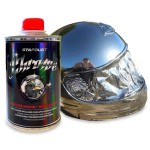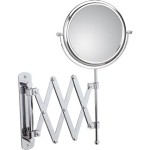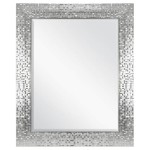Can I Mirror My Macbook to Smart TV?
Mirroring a MacBook screen to a smart TV offers a larger display for various activities, from enjoying personal photos and videos to delivering presentations. Several methods facilitate this screen sharing, each with its advantages and limitations.
Using AirPlay with an Apple TV or AirPlay 2-Compatible Smart TV
AirPlay is Apple's proprietary wireless streaming technology. It allows seamless mirroring of a MacBook screen to an Apple TV or a smart TV that supports AirPlay 2. This method provides high-quality streaming for both video and audio.
To mirror using AirPlay, ensure both the MacBook and the Apple TV or AirPlay 2-compatible TV are connected to the same Wi-Fi network. The AirPlay icon appears in the MacBook's menu bar. Clicking this icon presents a list of available devices. Selecting the desired TV initiates screen mirroring.
AirPlay generally offers the best performance for Mac users due to its integration within the Apple ecosystem. It allows for smooth playback of high-resolution video and audio content.
Utilizing HDMI Cables for a Wired Connection
An HDMI cable offers a direct, wired connection between a MacBook and a smart TV. This method bypasses the need for a wireless network and often results in extremely low latency, making it suitable for activities requiring precise timing, such as gaming.
MacBooks may require an HDMI adapter depending on the model. Once connected, users typically need to select the correct HDMI input source on their TV. The MacBook screen may automatically mirror, or users might need to adjust display settings within System Preferences.
While HDMI provides a stable connection, it lacks the flexibility of wireless methods. Physical cable management can also be a consideration.
Leveraging Screen Mirroring Apps for Non-AirPlay TVs
Third-party screen mirroring apps provide an alternative for smart TVs that don't support AirPlay. Several apps are available, each with varying features and compatibility. These apps generally require installation on both the MacBook and the smart TV, or rely on a common platform like Google Cast.
Performance characteristics of these apps can vary widely depending on the app itself, network conditions, and the processing power of both the MacBook and the TV. It's advisable to research and test different apps to find the most suitable option for individual needs.
Chromecast for Mirroring Specific Browser Tabs or the Entire Desktop
Google's Chromecast offers another option for mirroring, particularly useful for sharing content from the Chrome browser. While not as seamlessly integrated as AirPlay, Chromecast provides a cost-effective solution for mirroring specific browser tabs or the entire desktop.
A Chromecast dongle plugs into the TV's HDMI port. Casting is initiated from the Chrome browser on the MacBook. While Chromecast supports mirroring the full desktop, performance may be less optimized for activities demanding low latency compared to a direct HDMI connection or AirPlay.
Considerations for Optimal Performance
Regardless of the chosen method, several factors can impact mirroring performance. A strong and stable Wi-Fi network is essential for wireless methods like AirPlay and Chromecast. Network congestion can lead to lag and reduced video quality. Closing unnecessary applications on the MacBook can also free up resources and improve mirroring performance.
For HDMI connections, high-quality cables can ensure a stable signal and prevent image degradation. The resolution settings on both the MacBook and the TV should be compatible for optimal display quality.
Troubleshooting Common Mirroring Issues
Occasionally, issues might arise during screen mirroring. If the connection drops or the display quality is poor, restarting both the MacBook and the TV can often resolve the problem. Ensuring both devices have the latest software updates is also essential for compatibility and performance.
If problems persist with wireless mirroring, checking the Wi-Fi network for interference or congestion can be helpful. For HDMI connections, verifying the cable integrity and proper connection to both devices is crucial.
Choosing the Right Mirroring Method
Selecting the best mirroring method depends on individual needs and the available equipment. AirPlay offers seamless integration within the Apple ecosystem. HDMI provides a stable, low-latency wired connection. Third-party apps and Chromecast provide alternative solutions for non-AirPlay TVs.
Evaluating factors such as video and audio quality requirements, latency sensitivity, and budget constraints will help determine the most appropriate mirroring method for specific use cases.

How To Mirror A Mac Smart Tv

How To Mirror A Mac Smart Tv

How To Screen Mirror Macbook Tv Wirelessly Wired Connect Full Guide

How To Mirror A Mac Smart Tv

Use Airplay To Stream What S On Your Mac An Hdtv Apple Support

How To Wirelessly Mirror Macbook Screen On Any Smart Tv Easy

How To Mirror A Mac Smart Tv

How To Mirror Mac Any Smart Tv In 2024

How To Connect A Macbook Pro Or Air Tv Asurion

How To Connect Macbook Screen Tv Or Monitor Wirelessly Free No Wifi Apple 2024








